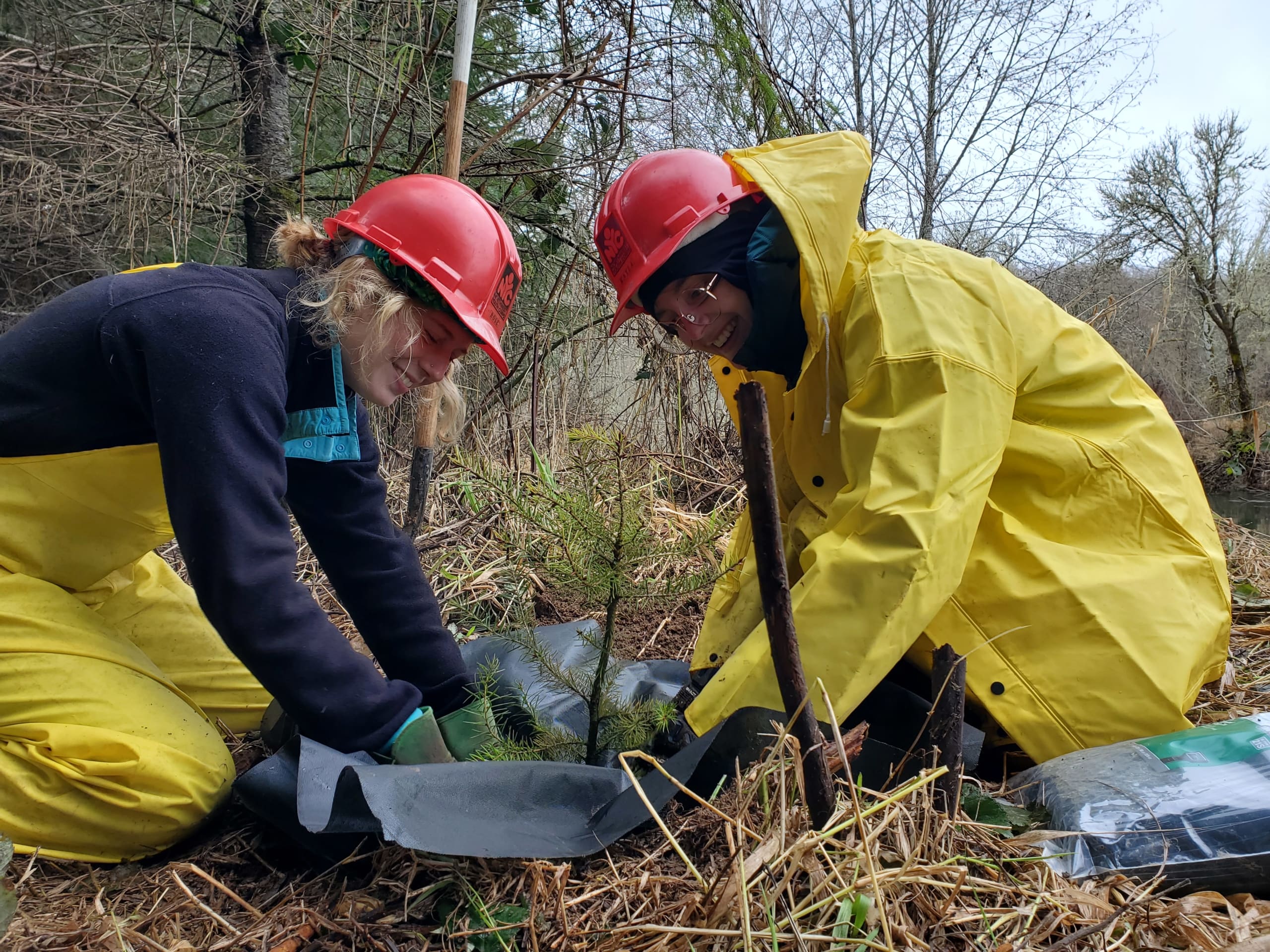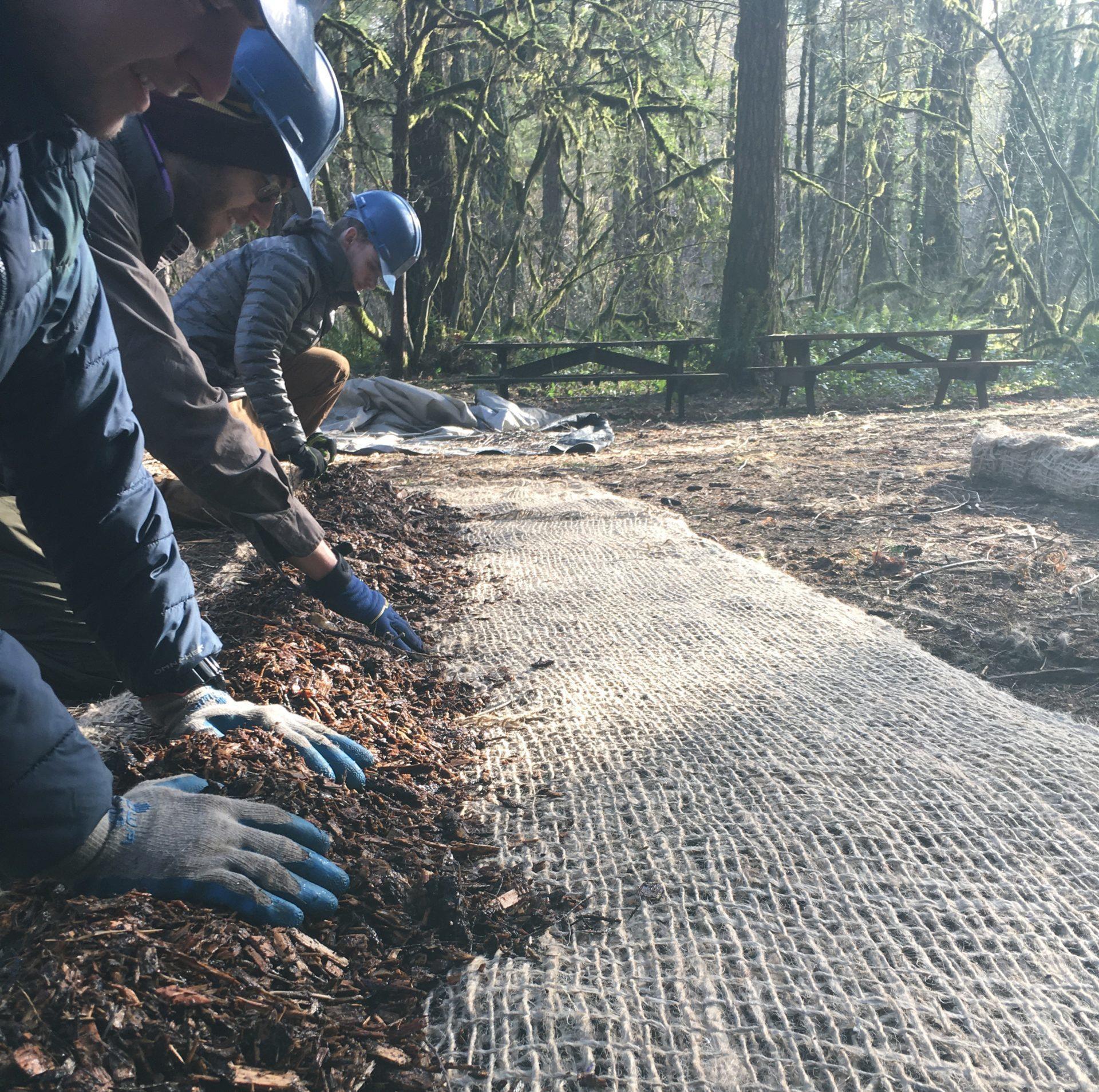By Sydni Dobson
While Corps provide service to communities every day, it’s not often that Corps get the call to work on a rare, catastrophic event that destroyed their very own local community.
In September 2020, Northwest Youth Corps (NYC) faced this reality. The Holiday Farm Fire emerged in western Oregon along the McKenzie River, forcing NYC and the community to evacuate immediately. The fire was fueled by strong winds that blew at 60 miles per hour, causing trees to fall down on surrounding power lines. In less than 72 hours, the Holiday Farm Fire burned a footprint of about 174,000 acres. In addition to the Holiday Farm Fire, there were two other fires that burned in the drainages to the north and south of the McKenzie River. As a result of these fires, more than half a million acres were damaged and thousands of residents were left without homes and clean water.

After evacuating multiple crews that were working in the area to Idaho for safety, NYC returned after a week to begin engaging in restoration activities. For the past five years, NYC has been involved in many post-fire mitigation and restoration projects, preparing the Corps to address the aftermath of this particularly devastating fire. Some aspects of this project were new, however.
“We’ve done this type of work before, but we’ve done it in remote areas that didn’t have quite the same impact on people,” said Jeff Parker, Executive Director of Northwest Youth Corps. “You go in and you do post fire restoration, and you’re cleaning trails and cleaning up landscapes that were impacted, but no infrastructures and no homes were hurt. It’s practically the same technique, but when you’re doing in a community that was burned to the ground; that feels different.”

Once NYC returned to the McKenzie River to proceed with the fire restoration work, the atmosphere had changed for Corpsmembers. Many felt the emotion of working in a space where you could see and smell the damage.
For their first order of business, NYC crews turned an old fish hatchery into a temporary relief center for residents. This required the crew to remove a lot of hazardous trees and burned material from the building. The purpose of the center was to have a central place where residents could pick up essential items such as food, clothing, and medicine. It was also a chance for the community to see NYC as a reliable relief resource.
Next, the crews installed silt fences and created wattles to control erosion. In the case of the Holiday Farm Fire, NYC decided to build their own wattles instead of purchasing commercial units. Wattles are long tubes of compressed straw or other vegetation; they are placed on slopes to help absorb runoff. In building their own wattles, NYC used native seeds and stock, minimizing their chances of using invasive weeds. In addition to maintaining erosion control, the crews cleared fuels out of the riverbank, chipping the felled trees. They’ve also started putting down new seedlings and native plants and shrubs. To date, NYC crews have treated hundreds of acres.

“Working in a place like this makes it much more pointed. You feel it in your very fiber, because you can see it right in front of you. There were thousands of volunteers who lost everything and worked shoulder to shoulder with us, because this was their community and their home,” said Parker.
Among the nine crews who served on the Holiday Farm Fire, close to 100 Corpsmembers spent at least a week doing fire restoration, while some members spent their full-service term working on the project. The crews received overwhelming support and appreciation from the community for the work that they’re doing.
Due to the hard work of the NYC crews, the people in the McKenzie community are now safe and starting the process of rebuilding their homes. Corpsmembers are still working to restore the landscape to a stable condition. To restore all of the damage to the McKenzie area, NYC plans to work on this project for the next three years. Currently, the Corps has about three crews a week that are doing restoration work and seven crews working on other projects in the surrounding area. By the middle of the summer, NYC plans to have a total of 35 crews spread across its areas of service in Washington, Oregon, and Idaho.






































































